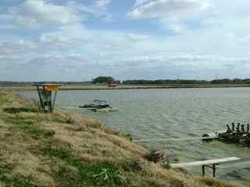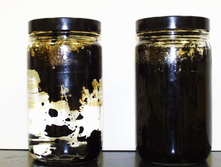This is a case where TKN is evolving through chemical and biological processes into ammonia. In many wastewater systems proteins, amines and other nitrogenous compounds will eventually evolve into ammonia nitrogen - either as free ammonia (NH3-N) or ammonium (NH4-N). This process accelerates with warm water temperatures and with good microbial activity. So the oxygen depletion and lack of ammonia removal was actually caused by the TKN being higher than the influent ammonia. The biological processes were working, but ammonia formed from TKN conversion was outpacing the ability to oxidize ammonia into nitrite/nitrate.
So, when presented with ammonia removal questions in wastewater, it is necessary to also evaluate TKN (total nitrogen), Total Organic Nitrogen, and Ammonia when evaluating the system.



 RSS Feed
RSS Feed